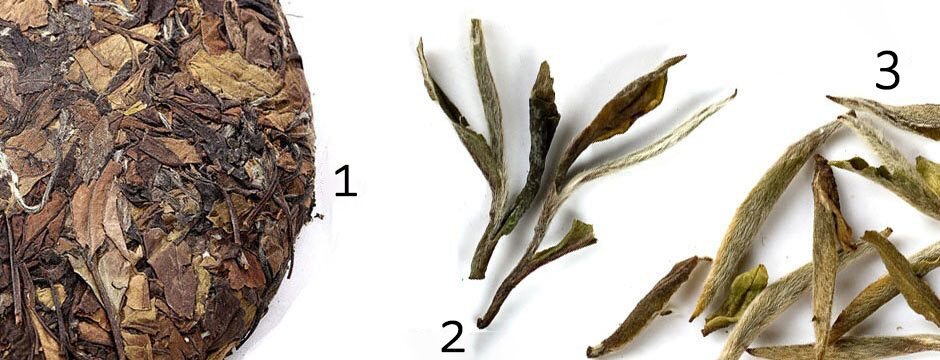The division of the tea into 6 «major» types is based on the technology of its production.
The tea plucked from the same plant may be processed in different ways. If technology of green tea production is applied the yield will be the green tea. Produced as oolong — the oolong it will be called. It’s another matter that in certain locations it is worthwhile to produce specific teas using leaves plucked from different parts of the tea plant. For example in Anxi county from Tie Guanyin tea bushes no other teas but the cognominal oolong is produced. The reason therefore is quite simple. Tea growers are willing to gain maximal profit from their plots by producing the best tea in the area that can be sold for higher price. The Tie Guanyin leaf is hard, all other resulting tea types are inferior and make poor profit. That is how mercantile interests of farmers affect the Great Chinese tea culture.
While in Guangdong famous for its «Lonely bushes» oolongs the same leaves are sometimes used for production of both red and green tea, but still in minor amounts. These teas are as expensive as oolongs for the original raw stock has similar value. They are tasty and fragrant, rejoice fanciers of green and red teas and appease curiosity of gourmets: «how the green and red tea made of these leaves will taste like?»
This is how well known name promotes other tea types, which, most likely, are simply produced of excessive leaves. Yet «Lonely bushes» oolong has much deeper and versatile flavor as compared to its congeners and for the same price much faster sells at the market. Therefore most farmers prefer to produce oolong. As soon as the demand changes and market preferences incline to the red tea of «Lonely bushes» — they’ll make it available.
Same principle applies to the specific processing techniques. 50 years ago oolongs were made strongly roasted. This was better for their storage and such flavor was more popular. Nowadays the trends changed and lightly roasted oolongs are more in-demand at the market. This tendency started at Taiwan and spread to the continental China. Most exemplary here is Tie Guanyin the gather of which may be split and roasted differently depending on the customer’s request. Today in tea shops in the first place you will be offered lightly roasted oolongs with mild aroma (qīngxiāng, 清香) while traditionally roasted tea with dense aroma (nóngxiāng, 浓香) should be ordered individually.
In some regions different teas may be produced from the same plant, however this is but a general pragmatic approach to the use of own land plots. For example in Fuding best plants used for white tea in March-April produce «Silver needles with white nap» as only in this period the bud is most dense and big. Later on in April, as soon as new buds appear, they produce «White peony». Traditionally for this tea the bud and two leaves are plucked. However the bud is not that dense at this time. In the next period only leaves are plucked for «Vivacity eyebrows» tea. This is the third lower grade of white tea. Simultaneously leaves are plucked for production of descent green and red tea, not of the highest quality however. This tea is far from being select but quite enjoyable for everyday drinking and healthsome, as in the spring the leaves are rich with useful substances. By the end of May and in summer the leaves produce flower teas as brewed alone they give plain and neutral taste.
As you may see in China the approach to the tea is economically feasible and clear. Consumers with high spiritual expectations and producers, who are simply willing to make profit, after many centuries have come to the compromise and satisfy each other’s needs, while initially pursuing different goals.


